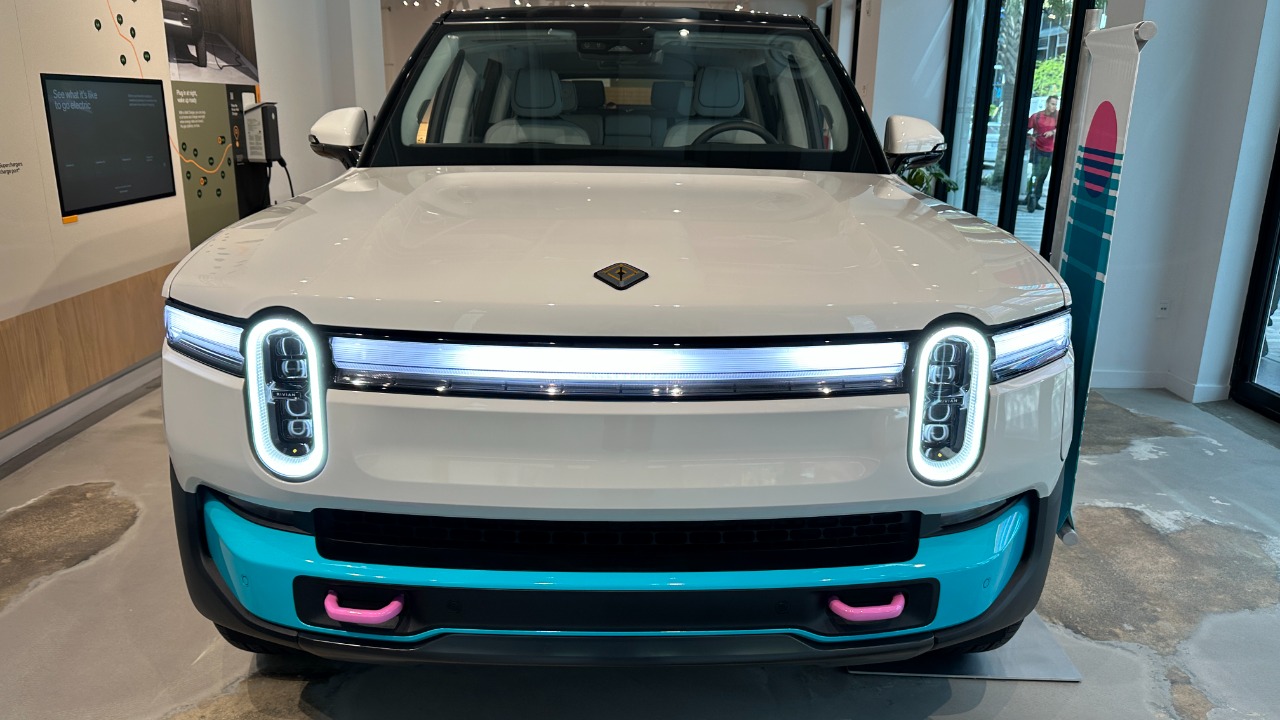
Rivian’s CEO, RJ Scaringe, has recently confirmed that an extended-range hybrid is not part of the company’s product roadmap. This decision starkly contrasts with the preferences of Scout’s customers, who overwhelmingly desire such a vehicle. This divergence between company strategy and market demand is further highlighted by the potential of Scout’s extended-range PHEV technology for broader application.
Rivian’s Official Position on Extended-Range Hybrids
RJ Scaringe’s statement that an extended-range hybrid is “Not In Our Product Roadmap” underscores Rivian’s commitment to pure electric vehicle (EV) development. The company’s decision to exclude hybrid variants from its lineup aligns with its overarching strategy to champion battery-electric platforms.
This roadmap choice has significant implications for Rivian’s future lineup. It means that the company has no plans to offer range-extender options in its upcoming models, a decision that could potentially impact its market position and customer base.
Customer Demand Driving the Hybrid Push for Scout
Contrary to Rivian’s strategy, Scout’s customers have expressed a clear preference for extended-range hybrids. Recent feedback indicates an overwhelming demand for this configuration, with basically all Scout’s customers wanting such a vehicle. This demand is driven by specific customer concerns, such as range anxiety in rural or off-road scenarios, which fuel the desire for hybrid technology in Scout vehicles.
This trend within Scout’s customer base reflects broader market dynamics, where interest in hybrid vehicles persists despite the industry’s push towards full electrification.
Scout’s Development of Extended-Range PHEV Technology
Scout’s extended-range PHEV technology is designed as a plug-in hybrid electric vehicle system integrated with EV capabilities. This technology addresses the limitations of pure EVs, such as range anxiety, by incorporating a gasoline range extension. As of February 12, 2025, insights into the readiness of this technology have begun to emerge, indicating its potential for broader application.
The key features of Scout’s PHEV platform, as detailed in a deep dive, include its modular components, which allow for adaptation to various vehicle sizes and types. This scalability could potentially extend the platform’s application beyond Scout’s initial models.
Scalability of Scout’s PHEV Platform Beyond Initial Models
Scout’s extended-range PHEV technology and platform could be scaled to other vehicles, potentially expanding to non-Scout lineups. The engineering aspects that enable this scalability include modular components that allow adaptation to various vehicle sizes and types.
Partnership dynamics, including Rivian’s role in production, could influence future collaborations. The scalability of Scout’s PHEV platform might open up opportunities for Rivian to incorporate this technology into its production process, despite its current focus on pure EVs.
Tensions Between Rivian Strategy and Scout Customer Expectations
There is a clear disconnect between Rivian’s no-hybrid policy and the preferences of Scout’s customer base, which prioritizes extended-range options. RJ Scaringe’s rationale for excluding hybrids from Rivian’s roadmap is tied to the company’s long-term EV goals, which seem to overlook short-term market signals.
Potential compromises could include licensing Scout’s PHEV technology. This would allow Rivian to cater to the demand for extended-range hybrids without altering its core plans for pure EV development.
Broader Industry Implications for EV and Hybrid Adoption
Rivian’s decision reflects wider industry debates on hybrids versus full EVs, with Scout’s PHEV serving as a counterexample. The role of customer feedback in shaping EV brands is evident in the case of Scout, where the overwhelming preference for extended-range hybrids has driven the company’s product development.
Scalability opportunities for PHEV platforms like Scout’s could potentially influence competitors’ hybrid strategies in 2025 and beyond. As the EV market continues to evolve, the tension between company strategies and customer preferences will likely remain a key factor shaping the industry’s trajectory.
More from MorningOverview